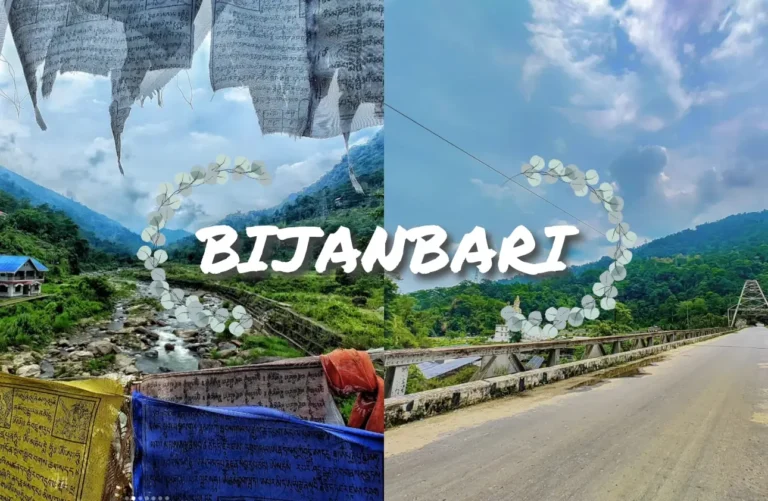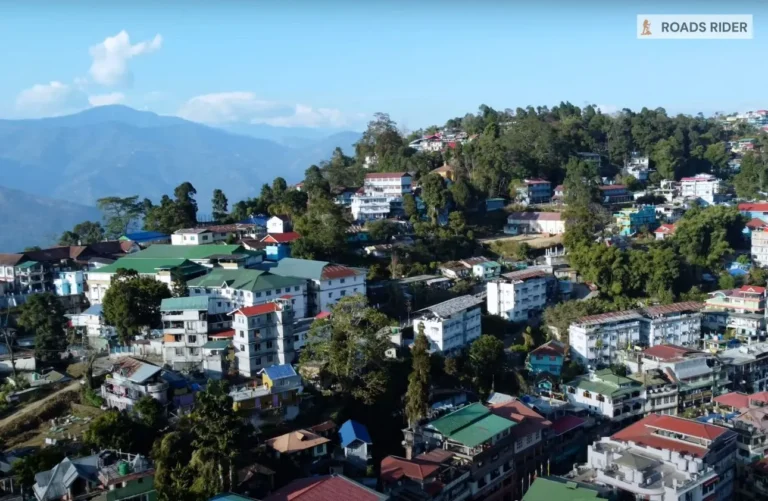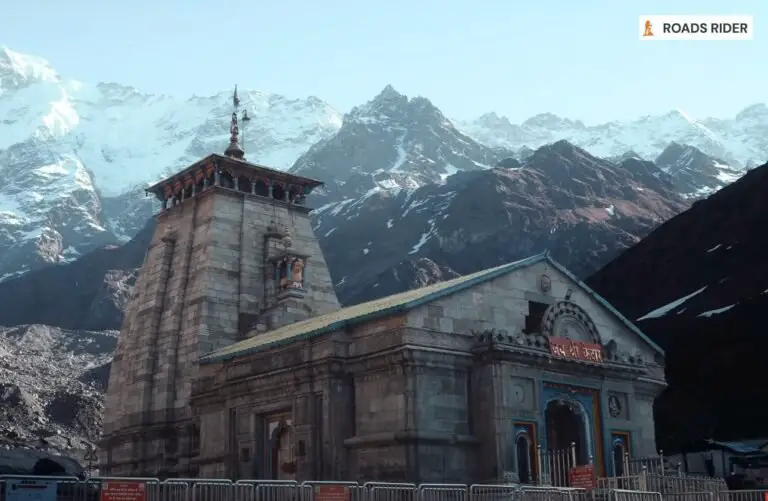Darjeeling Ropeway – India’s First Cable Car
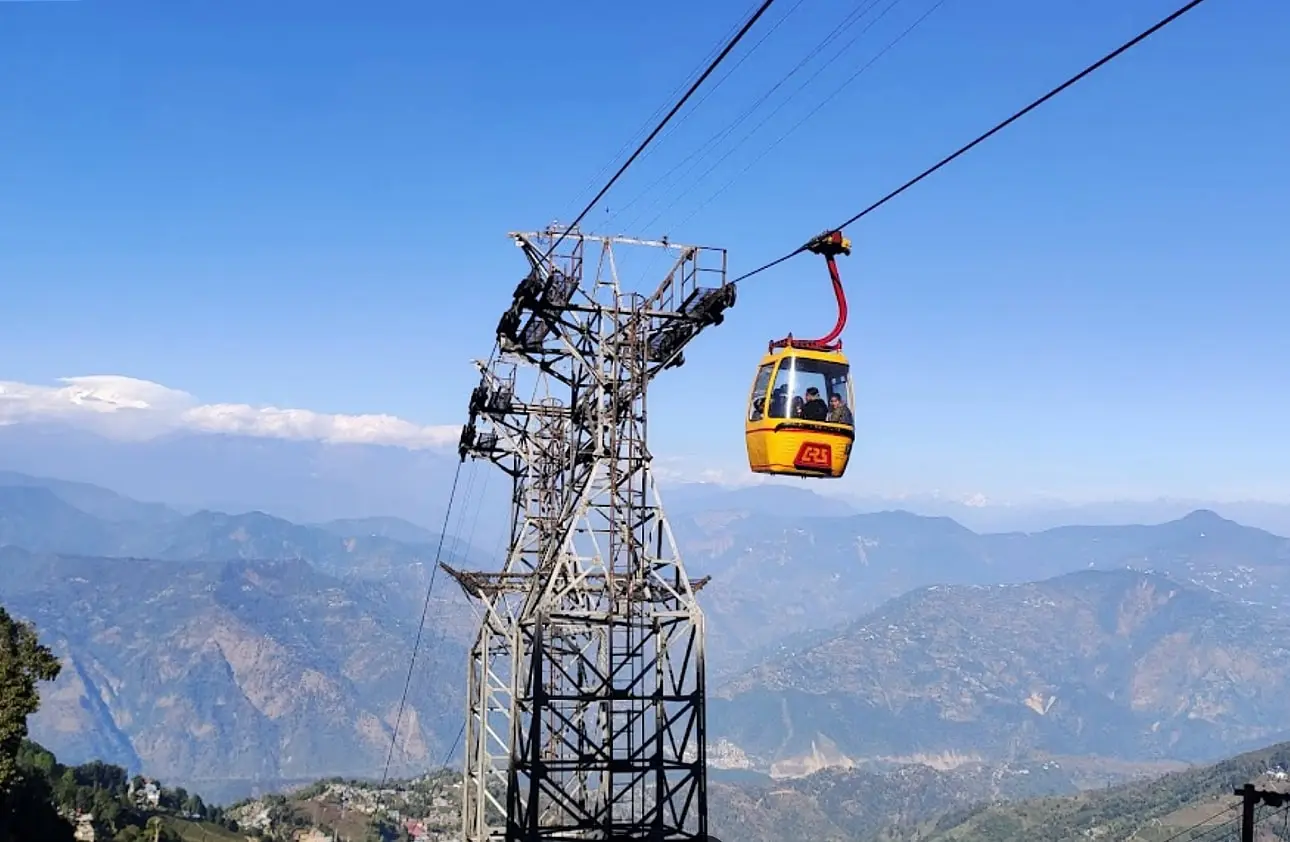
Darjeeling Ropeway also known as Darjeeling Rangeet Valley Ropeway. Established in 1968 and is the first cable car structure in India.
It was built as a mode of transport to make it easier to reach the tea gardens in the valleys below.
By bridging the gap between the highlands of Darjeeling’s Singamari 6560ft (2000m) and descending to 801ft (244m) at Singla on the banks of the Ramman River, which with Little Rangeet, meets the Great Rangeet.
Darjeeling Ropeway is one of the best ways to experience the panoramic views of the Eastern Himalayan Range offering panoramic views of the surrounding hills and valleys including the majestic Kanchenjunga, the world’s third-highest peak.
The name “Darjeeling Rangeet Valley Passenger Cable Car” is derived from the spectacular view of the valley around the river Little Rangeet. The Little Rangeet flows across the lush green Bijanbari valley.
Discovering the Ropeway
How do I board the Darjeeling Ropeway?
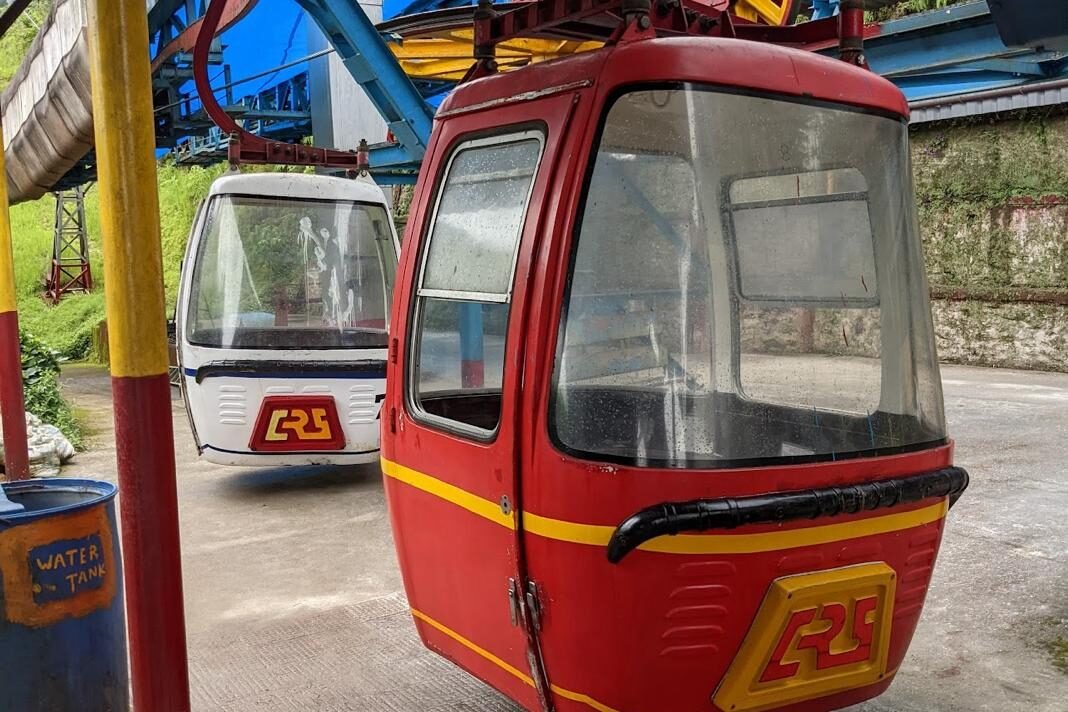
You will need to board the cable car from Singamari which is 3.7 km away from Darjeeling Railway Station. You will get cabs or shared jeeps from Chowk Bazaar which takes about 15 minutes to reach.
The Ropeway journey takes 45 minutes to reach Singla Bazar, 8 km away from Singamari through Ropeway. Stopping at Tukvar, Burnesbeg and Singla Tea Garden.
The ropeway passes over dense forests, mountain ridges, waterfalls, flowing rivers, green valleys and tea gardens. Where else can you get such a bounty of nature all in one place?
Current Operations
Now it has been used for a recreational purpose, as an iconic transport system. At first, there was only one gondola.
Later, it was improved so that there were 16 cable cars, each capable of carrying six people. However, presently the ride has been shortened to a station called Tukvar from where the Gondolas return.
Darjeeling Ropeway Ticket Booking
From Lebong Cart Road at Singamari, near St. Joseph College, which holds significance as the filming location for the Shahrukh Khan-starring movie “Main Hoon Na”.
Just opposite St Joseph College, a narrow uphill road, there is a signage and a narrow concrete stairway leads to the ticket counter.
During peak seasons there is usually a long queue up there and there can be a long wait time before you can board a gondola.
Darjeeling Ropeway Fare
The fare for the Darjeeling ropeway is as follows:
- The fare, priced at Rs. 260/- per person for a round trip spanning 5 kilometers, symbolizes not just a monetary value but also an investment in moments of awe and wonder.
- Children aged 3 to 8 years are welcomed aboard at a discounted rate of Rs. 130/-, fostering inclusivity and the spirit of exploration among young adventurers.
Darjeeling Ropeway Timings
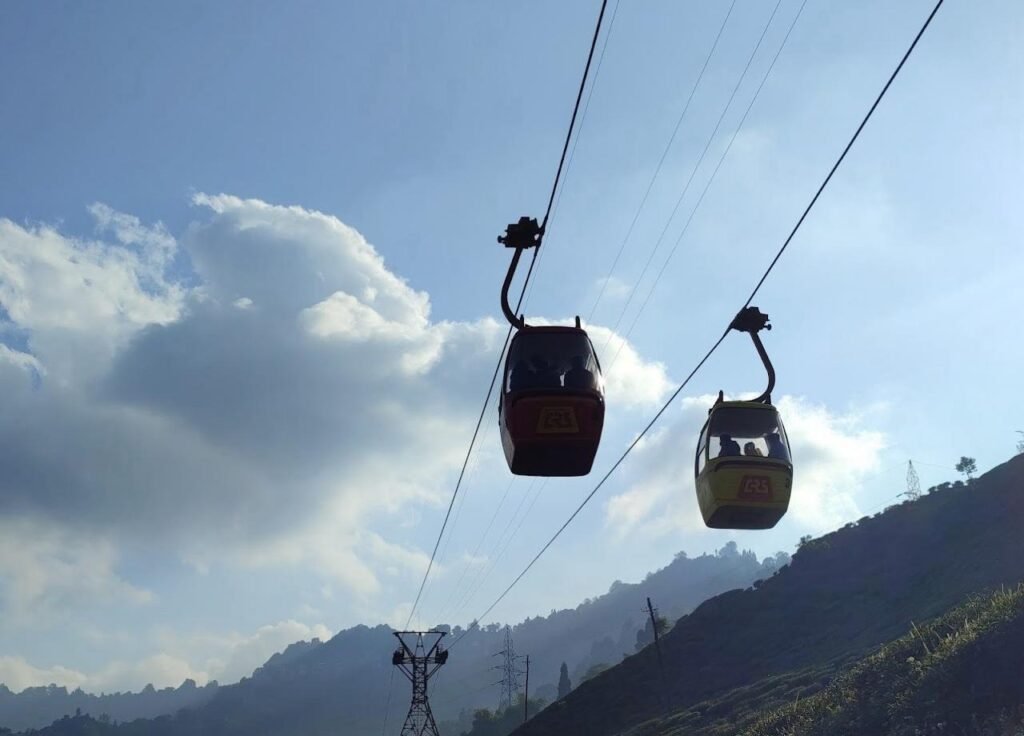
During the off-season (winter and monsoon), the Ropeway operates from 10 am to 4 pm. However, during the high season (summer and autumn), the operating hours are shorter, from 10 am to 2 pm.
Reason for Shorter Hours During Peak Season: The decision to reduce operating hours during peak season is due to the significant influx of visitors.
Once tickets are purchased, patrons often find themselves confronted with long queues, resulting in average wait times ranging from 1 hour to 90 minutes.
Consequently, to manage the queues efficiently, the ticket counter closes earlier during high season to ensure that existing queues are cleared.
Tips for Visitors: To mitigate wait times and maximize the enjoyment of the experience, it is advisable to arrive early in the morning.
Being among the first to arrive allows visitors to secure their tickets promptly and embark on the ride without enduring lengthy queues.
6 Tips For A Memorable Mountain Ride
Riding the Darjeeling Ropeway is an incredible experience that offers stunning views of the mountains and valleys. Here are six tips to make your ride even more memorable:
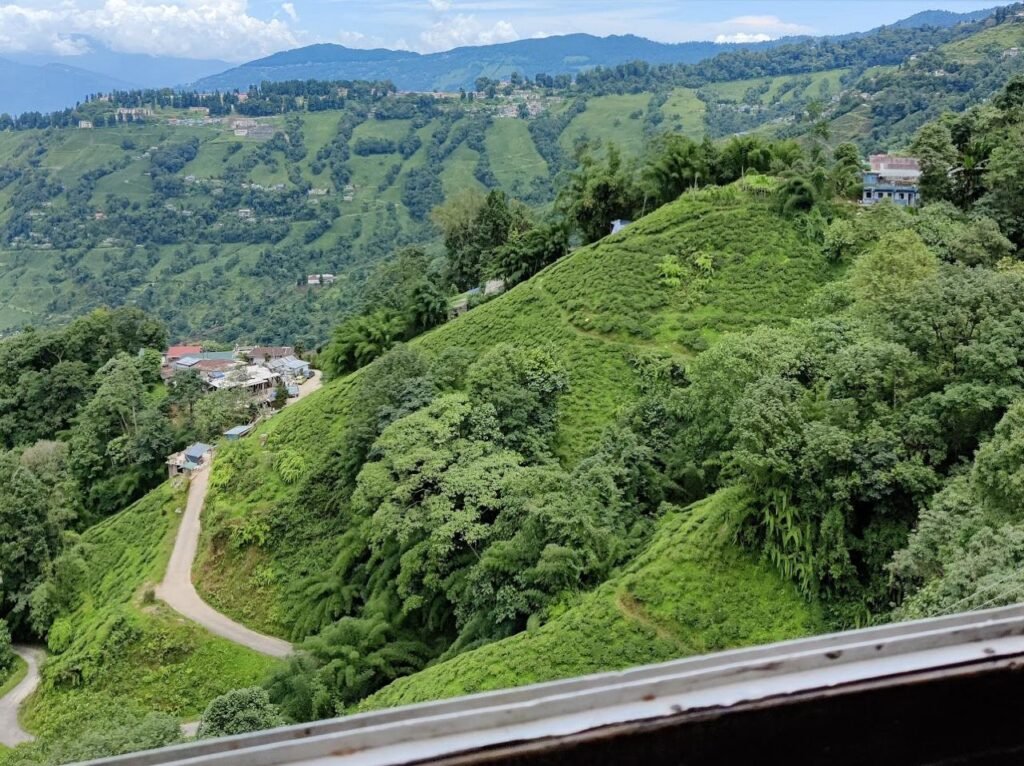
- Choose the Right Time: Consider taking the ropeway early in the morning or late in the afternoon to avoid crowds and get the best lighting for photos. The morning hours also offer clearer skies, providing better visibility of the Himalayan peaks.
- Boarding Process: To board the cable car, travellers need to head to Singamari, located 3.7 km away from Darjeeling Railway Station. Cabs or shared jeeps from Chowk Bazaar can transport visitors to Singamari, which takes approximately 15 minutes.
- Dress Appropriately: Darjeeling’s weather can change quickly, so dress in layers to stay comfortable throughout the ride. Even if it’s sunny when you start, it might get chilly as you ascend higher into the mountains. Additionally, wear sturdy shoes for walking around at the viewing points.
- Bring a Camera: Don’t forget to bring a camera or smartphone to capture the breathtaking scenery along the way. Whether you prefer panoramic shots or close-ups of the landscape, you’ll want to preserve the memories of this unique experience.
- Respect Safety Guidelines: Follow all safety instructions provided by the ropeway staff and avoid leaning out of the cabin or engaging in any unsafe behaviour that could jeopardise your safety or the safety of others.
- Inoperative Days: On the 19th of every month, the Ropeway remains closed for maintenance operations.
By following these tips, you’ll ensure a memorable and enjoyable ride on the Darjeeling Ropeway, creating lasting memories of your visit to this enchanting destination.
Key Points of Darjeeling Ropeway
Before visiting the Darjeeling Rangeet Valley Ropeway, there are several key points to keep in mind:
- Historical Significance: Established in 1968, the Darjeeling Ropeway holds the distinction of being the first cable car structure in India. Initially built to facilitate transportation to the tea gardens in the valleys below, it has evolved into a popular tourist attraction.
- Scenic Journey: Spanning from the highlands of Darjeeling’s Singamari (6560ft or 2000m) to Singla (801ft or 244m) on the banks of the Ramman River, the ropeway offers a breathtaking journey with panoramic views of the Eastern Himalayan Range. The majestic Kanchenjunga, the world’s third-highest peak, along with the surrounding hills, valleys, and the picturesque Little Rangeet River.
By keeping these points in mind, visitors can ensure a smooth and enjoyable experience exploring the Darjeeling Ropeway and its stunning surroundings.
Nearby Attractions
1. Himalayan Mountaineering Institute (HMI) and Padmaja Naidu Himalayan Zoological Park: Located in Darjeeling, the HMI is a renowned mountaineering institute that offers training courses and exhibits on mountaineering history. Adjacent to the institute is the Padmaja Naidu Himalayan Zoological Park, home to various Himalayan species including the endangered snow leopard and red panda.
2. Tibetan Refugee Self-Help Centre: Established in 1959 to provide support to Tibetan refugees, this centre offers insights into Tibetan culture, handicrafts, and traditional artwork. Visitors can explore the workshops where artisans produce carpets, woollen items, and other crafts. It’s a great place to shop for authentic Tibetan souvenirs while supporting a worthy cause.


